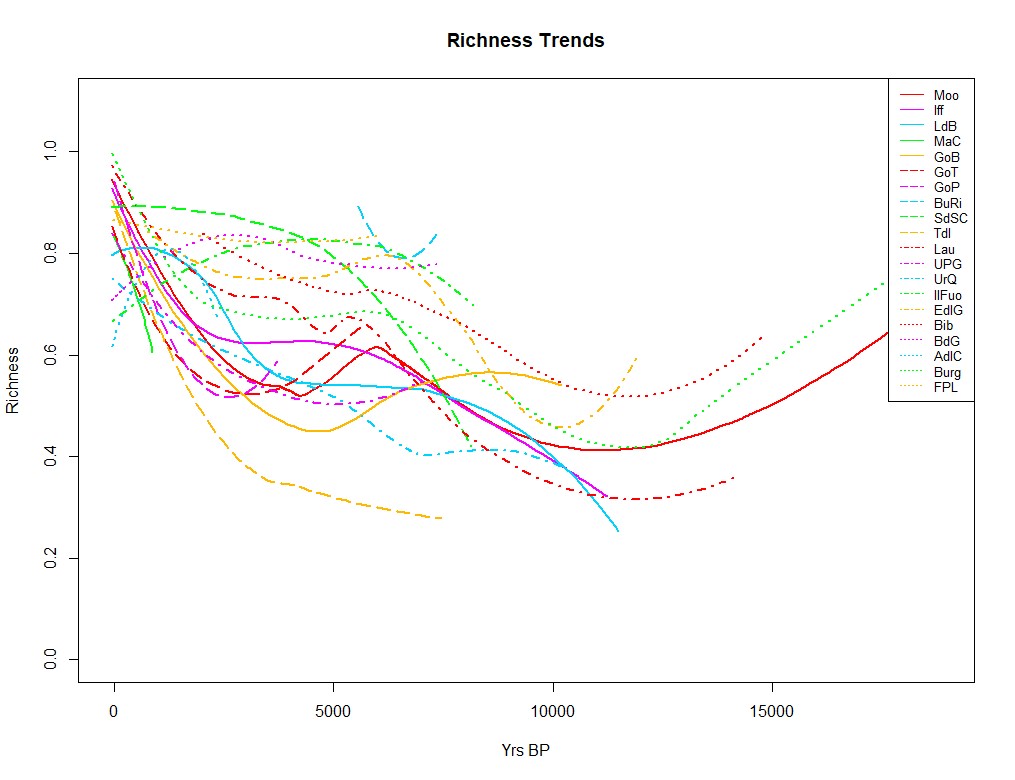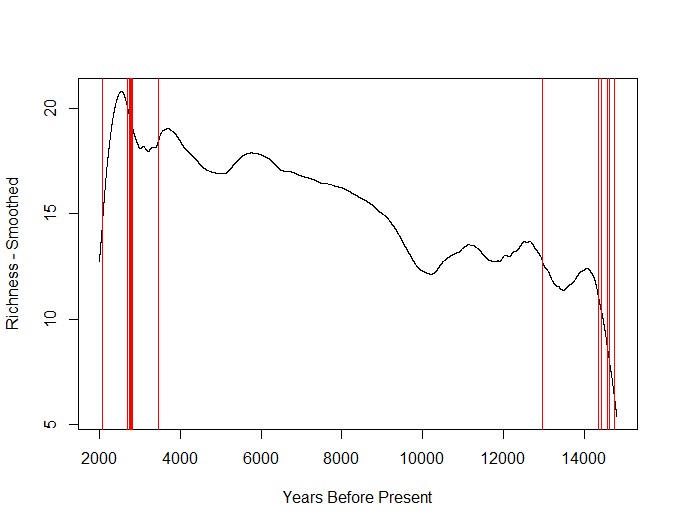Photo: wildfire at Eagle Creek Trailhead, USA. Credit: Luke Flynt (Unsplash)
Jacob Mercer is a Leverhulme Wildfires 2020 summer placement student, reading Mathematics and Statistics at Worcester College, Oxford. Through the Natural Environment Research Council research experience placement scheme, Jacob had the opportunity to undertake a project supervised by Dr. Daniele Colombaroli at Royal Holloway, University of London, titled “Quantifying past fire-biodiversity relationships in European Landscapes”. Here, Jacob shares his experience and findings from the project.
It had never occurred to me to question from where scientists obtained information about past environmental changes, including climate, ecosystem dynamic and relevant disturbance regime processes, such as wildfires and their effect on biodiversity. In this project I learnt about the challenges in reconstructing long-term ecological processes from sedimentary data, but also how the past can be informative to unravel future global ecological changes.
I was first tasked with reconstructing plant diversity over time using data from the European pollen database. I worked with an MSc student in Quaternary Sciences, Daniel Gallagher, who had selected 20 sites in the database, which had suitable pollen, charcoal and dung spore data. To analyse the data and extract meaningful inferences on past fire-biodiversity relationship, I used a series of statistical techniques including rarefaction analysis, principal components analysis and change point analysis.
If you had asked me at the start of the project how to measure the biodiversity of a system using pollen data, I would not have expected so much literature and debate around the topic; for example, how to account for taxonomical and temporal resolution uncertainties in a palaeo-series. There are probabilistic measures, such as palynological richness, estimated with rarefaction analysis (Birks and Line, 1992), which give an (relative) estimated number of taxa in each level, taking into account the minimum pollen sum.
I plotted the overall richness/biodiversity trends over time, across 20 sites over Europe (Figure 1) showing an overall increase in the majority of sites. I found this surprising, as I had thought that human impacts affect biodiversity through extinctions and reduced population sizes, but this project gave me the opportunity to learn that there is a strong anthropogenic component in present biodiversity, and that many species in the past (especially those of open environments) have been favoured by forest fragmentation. This implies that conserving present ecosystems requires an understanding of the different natural and anthropogenic components, and how they may respond to future climate and land use changes (Colombaroli et al., 2013; Whitlock et al., 2018). In this same vein, it might be natural to ask follow-up questions such as how we might best measure stability, complexity or connectivity of an ecosystem.

Another analyses I conducted in the project was the state-change analyses (Figure 2). This aims to show the extent to which a change in fire is related to a change in biodiversity. Initially, I naively hoped that the points of change in the data trends would mostly match up between the trends in pollen diversity and charcoal influx. However, this was too optimistic, and the points of rapid change in diversity and fire seems uncorrelated – although this is something which could be investigated further.


Overall, this project has taught me many things. It has been an interesting exploration of palynology and long-term ecology and the statistical and information theoretic tools being used in the fields. It has also taught me that wildfires are an important component of ecosystem history, and the understanding of present landscapes require a better understanding of past fire variability, and its drivers.






